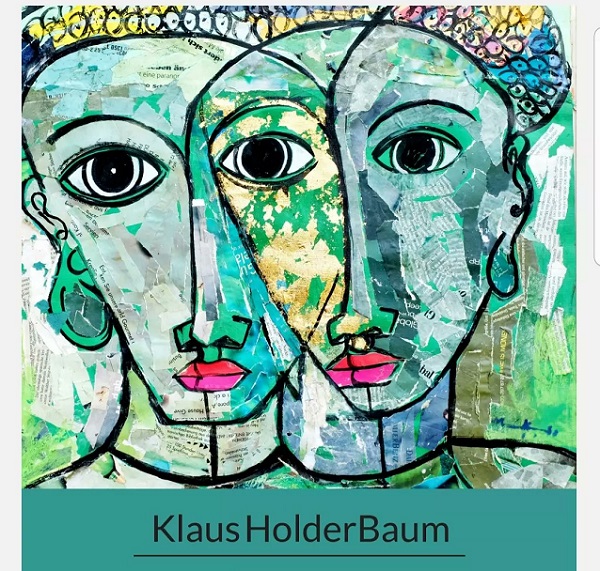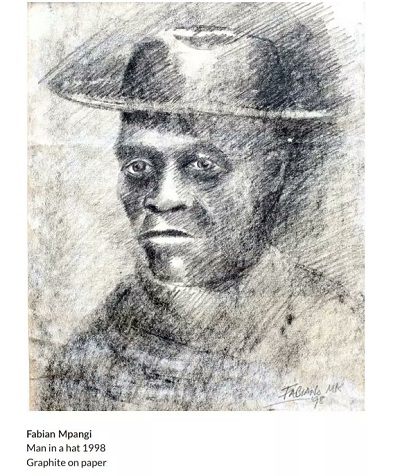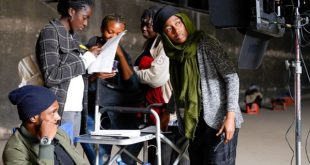
Exhibition celebrates the deceased art collectors’ distinguished legacy as a collector of both Ugandan art and West Africa tribal artefacts.
Kampala, Uganda | DOMINIC MUWANGUZI | The Klaus Holderbaum Art Collection exhibition recently opened in Kampala showcasing his extensive collection of paintings, drawings and artefacts. The artworks were collected during his sojourn as a diplomat in West Africa and later Uganda. In Uganda, where he finally retired after serving as Germany ambassador to Uganda between 1999-2003, he left an indelible mark as a distinguished patron of Ugandan art. As a patron, he bought a lot of art from some of the most highly profiled artists like Geoffrey Mukasa, Maria Naita, George Kyeyune, Romano Lutwama and Fabian Mpagi. This means he had a good taste for great art. Nonetheless, he also bought art of the younger artists if it had the power to appeal to his exquisite taste. He was also the type who would never miss an exhibition opening in Kampala. It was his way of socializing with the local art fraternity and offering support anywhere it was needed.

The exhibition carries forth this charisma of the collector while providing critical lessons for everyone in the art community. The first takeaway from this one of the kind showcase of art is how art plays a pivotal role in cultural exchanges and preservation. Klaus was a German expatriate who fell in love with art from the African continent. He committed himself to continue doing so, even in his retirement with the belief that art says more about a certain grouping of people than any other aspect of society. By buying Ugandan art, Klaus became more closer to the Ugandan society; understanding and appreciating it better; hence his decision to settle here until the time of his death. It is through the deepest connection he had with artists as cultural practioners that he developed a love for Uganda local cuisines, language and social life.
An exhibition of this type brings into perspective the idea of linking art to research. How do we know about the art of Geoffrey Mukasa, Maria Naita or Fabian Mpagi who’re now deceased? It is partly through this type of exhibition. With the belief that art is an expression of the individual’s philosophy on life and what surrounds them, we begin to appreciate through their collected works what shaped Mukasa or Mpagi’s artistic ideology on canvas. For both artists, Buganda was their ancestral home and therefore their work imbued the norms and traditions of its people, the Baganda. This is visible in the vibrant and bright palette that will remind the viewer of the rush vegetation found in the countryside. We may not have been able to understand the imagery or visual elements in their art and why these dominate their canvases if their art was not collected. Collecting their art provided an opportunity to preserve and understand the social -cultural connotations in their work even after they had gone.
There is an emerging group of Ugandan middle class who are beginning to buy art and hopefully in a decade or so, they will have grown a valuable collection of art. For these, this exhibition is particularly dedicated to them within the context of collecting a diversity of artists both young and old, and with different stylistic approaches. This variety gives a collection a quality of richness in value; the older artworks are generally more valuable in the secondary market than those which are recent. The artefacts in Klaus’s collection date back centuries ago. The possession of some of Fabian Mpagi’s work produced in the early 1990s, is a rarity for many collectors of Ugandan art!
Equally, it is critical to use this exhibition to promote a culture of buying art among the Ugandan elite class. The past several decades have been dominated by Western expatriates buying art on the local art scene. Though their contribution has been enormous through financially supporting budding artists, it has otherwise perpetuated the stereotype within the art corridors that for one to be successful they need to enlist a white patronage. This understanding is not only misleading but has dire consequential effects on the artist, their art and the entire art industry. The most obvious one is falling in a trap to produce what is trending in the international art markets with the hope of becoming popular and rich overnight.
Klaus Holderbaum Art Collection exhibition is a unique experience for everyone because not only does it celebrate the legacy of the deceased lanky and vivacious ex- diplomat, but open a door for us to learn something new. These lesson we learn shall enable us to contribute to the sustainable growth of the local art industry.
The exhibition was mounted at Xenson Art Space from 17th- 24th June 2023. The event was made possible by Goethe Zentrum Kampala and Germany Agency for International Cooperation GIZ. Images are courtesy of Xenson Art Space social platforms.
 The Independent Uganda: You get the Truth we Pay the Price
The Independent Uganda: You get the Truth we Pay the Price



There is an emerging group of Ugandan middle class who are beginning to buy art and hopefully in a decade or so, they will have grown a valuable collection of art.